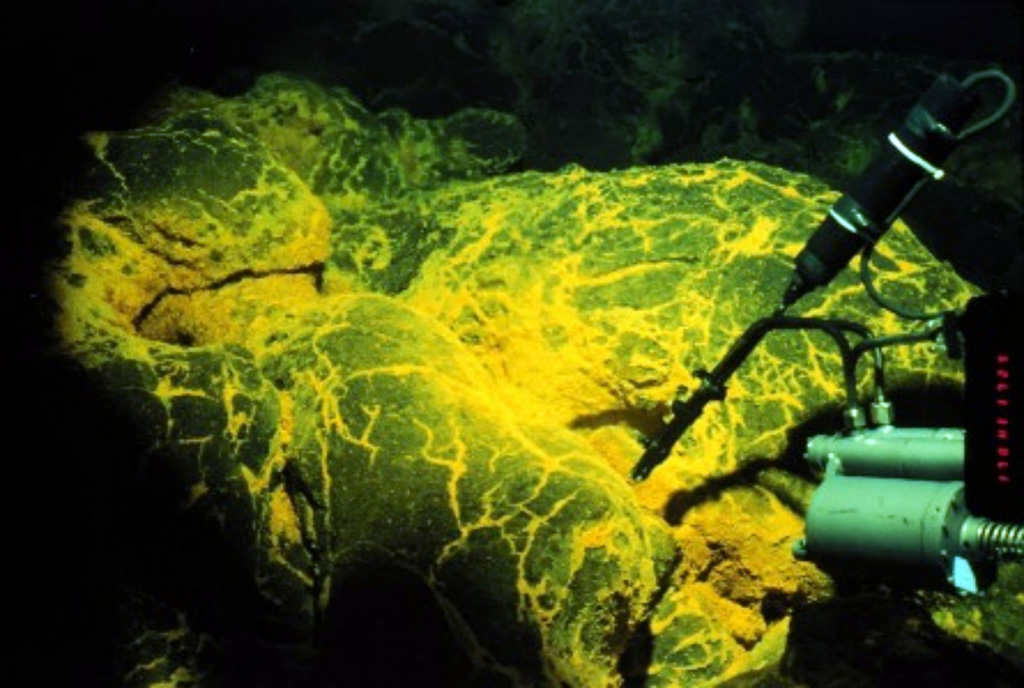Image GVP-10341

During a 1993 ROPOS ROV (Remotely Operated Vehicle) dive on the CoAxial Segment along the Juan de Fuca Ridge a new lava flow was discovered on the sea floor. It was still hot and venting warm water (up to 50°C), and was 2.5 km long and 300 m wide. Bright yellow sediment patches indicated the presence of iron-reducing bacteria in the vent fluids. The CoAxial segment is located about 435 km W of the Oregon coast, NE of Axial volcano.
Image courtesy of National Oceanic and Atmospheric Administration (http://www.pmel.noaa.gov/vents/home.html).
![]() This image is made available as a Public Domain Work, but proper attribution is appreciated.
This image is made available as a Public Domain Work, but proper attribution is appreciated.
Galleries: Submarine Volcanoes
Keywords: submarine volcano | lava flow | mineral deposit

CoAxial Segment
